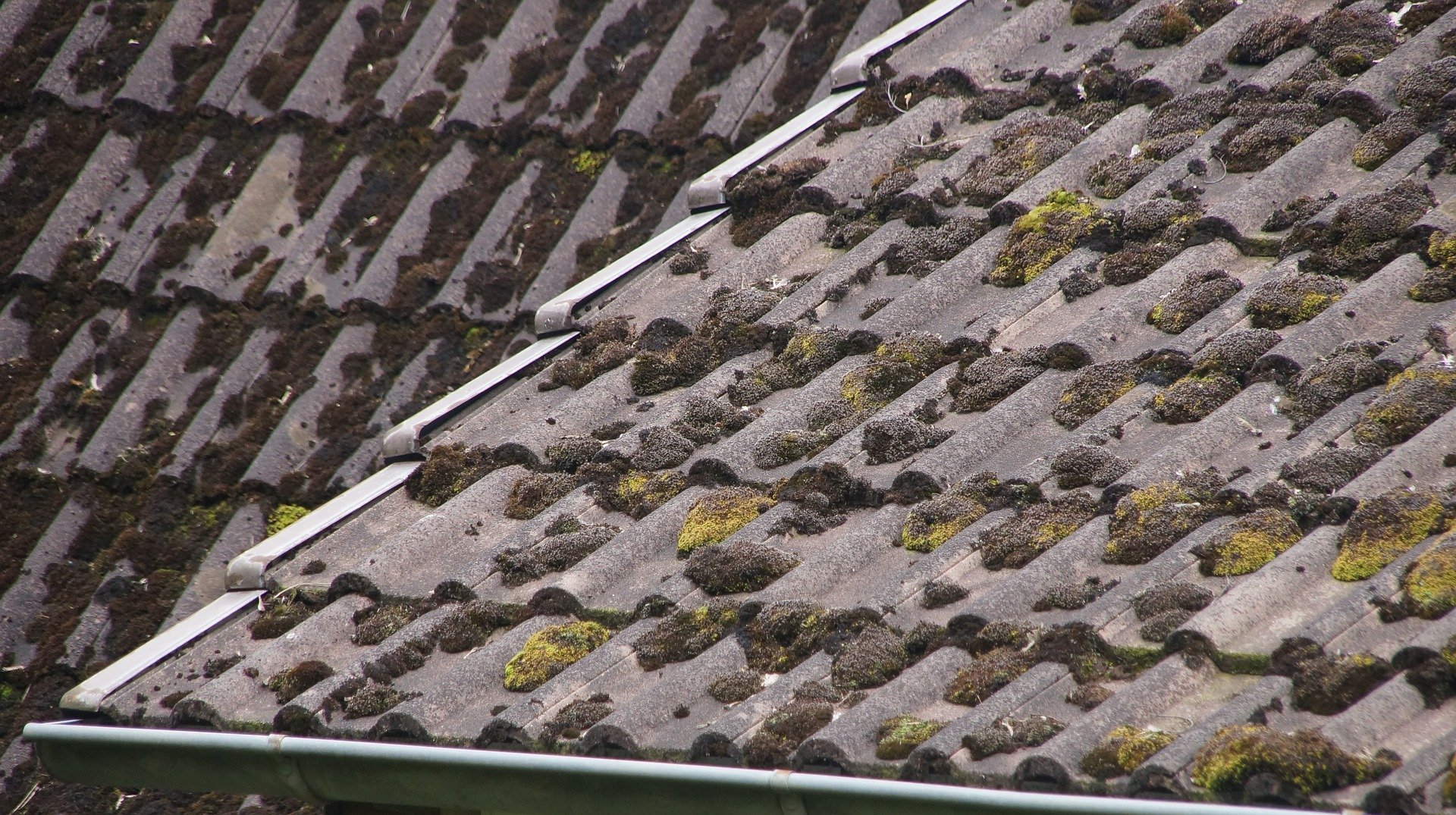Have you ever seen dark stains, discolored streaks, or green mossy growth on a roof? Where it looks like someone scrubbed charcoal or dirt on the roof shingles? In 2019, we discussed the effects of gloeocapsa magma or “blue green algae.” Those stains are a kind of mold, and are very damaging to roofs. Usually mold becomes visible to homeowners after it’s been on the roof for two or more months, and appears dark from a protective darkly pigmented outer coating that gets dark from damaging UV rays. This blog post will discuss kinds of mold that appear on roofs and how the most updated options for cleaning your house in 2020.
Why Is It On My Roof?
There are a variety of reasons mold grows on roofs; weather, humidity, and roofing materials are strong factors in mold production. For starters, algae spores are airborne and can travel by wind, animals, and clothing. Algae and mold can easily be spread from rooftop to rooftop in a neighborhood simply by strong wind.
Roof mold occurs in many places in the United States, but is most common in excessive amounts in the southeast parts of the country: Louisiana, Mississippi, Alabama, Georgia, Florida, North and South Carolina, Arkansas, and Tennessee. Algae tends to be attracted to homes that experience hot and humid months. Moss also tends to be more severe on roof sections that are shaded and exposed to periodically damp cool weather conditions, such as the North side of the house; the northern part of the roof is shaded for most of the day.
Mold can be found on all kinds of roofs, but is most common on roofs with asphalt shingles. Asphalt shingles are an inexpensive roofing material and usually involve using fiberglass and crushed limestone as fillers; crushed limestone is an important food source for algae, and the fiberglass and asphalt help encourage the growth of mold.
Importance of Mold Removal
Mold is a disgusting and persistent problem, and can result in reducing the lifespan of a roof, attraction of rodents, can travel to other parts of the house besides the roof. The wood components of your roof rot when they’re exposed to a combination of moisture and fungi. If your roof has seen a lot of wet, hot, and humid weather conditions, it is a hot spot for algae traveling in the air. When the algae does attach to your house, it feeds on rotting wood and can create an unstable roof that requires costly replacement. When your roof has mold, it creates a moldy, damp and soft habitat for rodents who either chew on your roofing materials or crawl to other parts of your house in search of food.
Mold Removal
If you’re reading this before you notice mold on your roof, you should focus on providing proper and regular maintenance on your roof. Ensure proper ventilation through your home, consider upgrading your asphalt shingles to moisture-resistant types, and make sure your roof is cleaned regularly.
If your roof has already started showing small signs of mold with dark stains, gently remove moss with a soft brush or flexible leaf rake. It’s important to maintain gentle cleaning and to avoid breaking or loosening protective mineral granules from your shingles. Prior to cleaning your roof, make sure to hide any lawn furniture and cover vegetation/landscaping to prevent messy runoff from your roof.
If you don’t want to climb on a slippery roof or your roof has a considerable amount of mold growth, it’s best to contact a professional.
The roofers at Exterior Remodel & Design are expertly trained to understand all roofing problems and determine clear and concise solutions that are best for homeowners. Contact us today at (402) 861-0000, by email, or by contact form.

